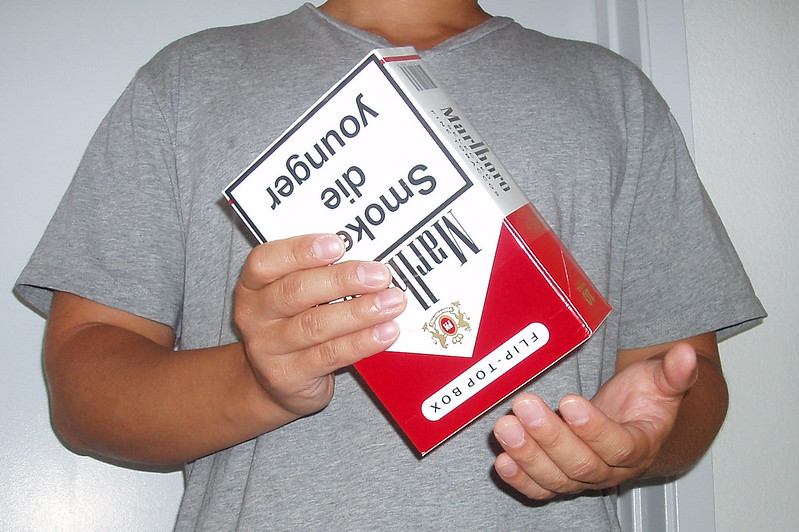What did you buy last? Do you remember the reason you purchased it? The reason you picked that certain brand over the others? How reasonable was your decision-making process?
If we’re being truthful with ourselves, we acknowledge that our purchasing choices usually aren’t based on a rational comparison of a product’s advantages and disadvantages; however, rather a gut-level choice we can’t really explain. Therefore, what precisely inspires us to purchase things?
Also, what is the reason that some people like Pepsi to Coke or Ruffles to Lays? While we might give the credit to the difference to just personal preferences in taste, a closer look shows that the answer to that is much less cut and dry, and goes really deeper.
Buyology looks at what’s really happening in our brains that make us open or close our wallets. It’ll reveal to us that present techniques used in market research, like questionnaires, don’t really work since what we mention that we want and what our brains say we want are usually in conflict.
Rather, marketers should consider neuromarketing –which is., marketing based on information we acquire from refined neuroimaging machinery –so as to make the best possible marketing techniques.

Chapter 1 – Our buying choices are impacted without our control with mirror neurons
What is the reason why another person yawns we get the uncontrollable desire to do the same? Or what is the reason why seeing another’s person beaming smile puts a smile on our face too? Everything boils down to mirror neurons.
During the year 1992, Giacomo Rizzolatti a scientist did research on a kind of monkey known as macaques and was surprised to discover that the animals’ premotor neurons lit up both when trying to get a nut and when seeing another macaque do the exact same thing.
These are mirror neurons in action, and data even proposes that the aspects of our brains that have mirror neurons are similarly stimulated whether we’re doing an action ourselves or basically just seeing another person do it.
Basically, we redo in our minds anything we see some else doing.

Through advertising, companies try to take advantage of our mirror neurons to lure us into buying. Since our mirror neurons react to “targeted gestures,” that is, pictures of a person drinking a soft drink or lacing up a new shoe, this makes them vital to marketing. For example, the gorgeous models on Abercrombie & Fitch bags, initiate our mirror neurons with the assurance of a perfect body.
However, mirror neurons don’t usually work alone: they usually work in action with dopamine, which is a pleasure hormone, so as to form a happy feeling that makes us purchase. This is the reason why we feel really good after a small “retail therapy,” even if that surge of dopamine makes us purchase more our rational minds would otherwise permit.
Evolution can be used to explain the rush we acquire from buying. We think of purchases to be a sign of an increase in social status, which eventually improves our reproductive likelihood. Hence, our bodies’ survival nature overflows our brains with dopamine to push us to purchase the newest car model or an extravagant new handbag for us to improve our likelihood of reproduction.
Chapter 2 – Somatic markers influence the manner we view products.
Assuming you’re at the shop purchasing peanut butter. Do you pick Peter Pan, Skippy or Jif? Most definitely, you chose without an instant’s uncertainty –although you most likely can’t explain why you chose it.
The reason for that is as a result of our brains’ somatic markers or shortcuts that activate automatic reactions. Anytime we make purchasing choices, our brains process an excess of opinions and thoughts and shorten all of them into one response. Instead of beginning the process afresh anytime we’re met with the same choice, our brains form shortcuts based on a lifetime of experiences.
As a matter of fact, in a current study that was conducted in a German research group, if found out that above 50% of our purchasing choices are based on spontaneous – and hence unconscious – reactions. The reason is that our brains have already formed our decision-making map with somatic markers.
Fascinatingly, somatic markers make us like specific brands over others. For instance, researchers discovered that the buyers’ choice for Andrex over Kleenex toilet paper was associated with Andrex’s labrador puppy mascot. Although it might look weird, attractive puppies make us contemplate a young family and even toilet training, and hence improve the brand with these theoretical associations.
Also, this clarifies the reason why we usually pick German-made kitchen appliances when met with a purchasing decision: we relate Germany with technological quality.

Not surprisingly, effective marketing tools are somatic markers. Advertisers usually attempt to form links between two completely different things so as to strengthen our somatic markers.
An illustration of this that was mentioned by the author is the power of paint color. So as to assist a struggling bank, the author persuaded its manager to paint his institution –as well as everything there– a lively pink color. Nearly three months after, the business was thriving. Why did this happen? Clients linked that pink color with their childhood piggy banks.
Chapter 3 – Marketers progressively make use of fear to sell us their products, and that is effective.
Though it’s definitely crafty in a sense, alluring our mirror neurons or deep-rooted somatic markers is quite harmless. Unluckily, that isn’t the case for every of the marketing methods, some of which utilize our negative feelings to make us purchase more.
As a matter of fact, fear can be a very persuasive marketing method. When we are worried or scared, we try to find reliable foundations and pleasant experiences –may be in the form of purchases –so as to acquire the sweet rush of dopamine that comes with it. Eventually, dopamine, makes us want to continue shopping.
For instance, if a specific brand of lingerie or shaving cream can increase the dread of dying alone while at the same time giving us a direct answer to this fear, then we’re more likely to purchase it.
A specifically touching illustration of this principle working can be noticed in Lyndon B. Johnson, the 1964 presidential contender iconic “Daisy” commercial, where a child plays with daisies just before a nuclear explosion explodes at the back of her. The link is clear: vote Johnson or you die in a nuclear war.
For us to study the efficiency of this commercial; Tom Freedman, the political strategist lately studied voters’ amygdala, the aspect of the brain that in charge of, as they watched the commercial. The outcomes? A clear rise in activity in the amygdala. It shouldn’t be surprising that Johnson was the winner of that election.

Also, fear-based somatic markers can even link specific products with a lack of negative experiences. For instance, computer security software and diet pills form the association between the lack of their products with unpleasant repercussions; hence, alluring us to purchase them so as to evade negative experiences.
More notably, Johnson & Johnson’s No More Tears Baby Shampoo assures to assist evade the painful childhood memories of burning eyes in the tub. Who would want to put their baby at risk of burning eyes?
Chapter 4 – In marketing, subliminal messaging is used very frequently and it persuades us to buy.
The fear surrounding subliminal messaging –that is, the use of auditory, visual, or other sensory messages that are picked up just by our subconscious – has been widespread since the yeat 1957, when the first subliminal advertising was used in an astonishing study. In spite of the fact that the study was dismissed as a sham; however, the National Association of Broadcasters prohibited subliminal messaging.
But, if subliminal messaging comprises anything that subconsciously lures us to purchase a product, then it’s still really there in contemporary marketing. Think of, for instance, the sweet aroma of newly baked cookies wafting from the kitchen of the house you’re inspecting, or that new car scent while test driving a car, or Gershwin’s piano rolls playing underneath as you shop for a new suit. All these kinds of sensory stimulation produce obvious subconscious reactions.
Less subtly, Philip Morris, the owner of the tobacco brand Marlboro, really pays money to have their decoration with color schemes, ashtrays and other representations indicating to the Marlboro logo.

Therefore, we have these subliminal messages everywhere; however, do they really work? Neuromarketing studies reveal hat they actually work. One new research discovered that something as basic as briefly looking at a happy or frowning faces can influence the amount we’re eager to pay for a product.
In the research, the participants were revealed one of the two faces and then they were told to pour for themselves a beverage and chose how much it was worth. The people that the smiling, happy faces were revealed to poured significantly more and were ready to pay two times the amount the people who had been shown the grumpy faces were willing to pay.
These findings imply that even something as little as being welcomed with a smile by your cashier can have a huge effect on sales.
Chapter 5 – Counterintuitively, health warnings and disclaimers really make sales increase.
Gone are the days when doctors prescribe their best brand of smokes to their patients. Rather, anytime smokers go to the convenience store to buy cigarettes, they come across with health warnings ranging from honest to absolutely offensive. Still, despite all of these warnings, about 15 billion cigarettes are bought daily across the globe.
Understanding this, we need to question ourselves: Do these disclaimers actually work?
In a word: no, it doesn’t really work. As a matter of fact, it looks as if the warning labels on cigarettes really have no effect on reducing smokers’ cravings. In a study that was conducted, participants were shown pictures of cigarette warning labels, then they were told to rate their craving to smoke. From the brain scans of the participants, the warnings didn’t do anything to impact their urges on a neurological level.
As a matter of fact, warning labels themselves really work against their planned aim. The exact same study discovered that cigarette warnings, instead of just disgusting people, really aroused the brain’s nucleus accumbens or “craving spot.”

The author, as well as his team of researchers, did a similar experiment where they showed a group of participants, images of specifically repulsive anti-smoking commercials. In the commercial, an apparently outgoing group of people sits together and they were smoking cigarettes; however, their cigarettes release lumps of greenish fat rather than smoke. The fat emits onto their outfit, the table, and the floor; however, it looks like the group of smokers didn’t even realize it at all.
The point is obvious: smoking makes horrible gobs of fat to move through your bloodstream, clogging your arteries and ruining your health. Still, shockingly, this horrible commercial did not repulse smokers into stopping their bad habit. Rather, their brains concentrated on the pleasant surroundings of these gregarious conversationalists, and their urge for a cigarette really grew.
Therefore, instead of discouraging the habit, cigarette health disclaimers really enhance it!
Chapter 6 – Powerful brands employ some of the same approaches as major religions to guarantee loyalty.
What is the common thing between Coca-Cola and the Catholic Church? The response to that may be somewhat astonishing: they use a lot of the same approach for forming– and maintaining – loyalty.
For one, brands related to quasi-religious rituals are stickier than the other brands, that is, they assist us to create an emotional relation to the brand.
Think about the Oreo cookie. Some people love to separate the cookie and lick the filling from the middle while other people like to dip the whole cookie in a glass of milk. Whichever way, everybody has their own ritual for eating the cookies, and hence, Oreo itself has turn into as much a ritual as it is a cookie.
Also, powerful brands, such as major religions, acknowledge their personal mission that makes them different from others. For instance, IBM’s mission is to offer “Solutions for a Small Planet.” Whereas, Bang & Olufsen, assert to possess the “courage to always question the ordinary in pursuit of surprising, long-lasting experiences.”

Likewise, just like religion, brands create an “us vs. them” approach to guarantee brand loyalty. Maybe it’s Coke vs. Pepsi or Visa vs. Mastercard, powerful brands describe themselves by forming a difference with their rivals. This approach, while maybe controversial, certainly gains devoted followers and makes us loyal to the brand.
Also, brands make use of iconography in the form of logos just liken those seen in religions. think of Nike’s “swoosh” and McDonald’s “golden arches”: these logos create strong connections between a product and its symbol, not different from the religious feelings we link with depictions of an angel or a crown of thorns.
As a matter of fact, we even see similarities between powerful brands and religious references in the manner our brains react to these messages. For instance, a neuromarketing study discovered that the participants’ brain activity while seeing pictures from powerful brands –like iPod, Harley-Davidson, and Ferrari – and religious images were almost the same. This proposes that our emotional engagement with a powerful brand almost looks like our spiritual connections.
Chapter 7 – Are sexual references in advertising effective? Not the manner we believe they do.
Definitely you’ve heard that “sex sells,” and the popularity of sex in advertisement surely proposes that it’s real. Think of a National Airlines advertisement, where a sexy stewardess assures her that she’ll “fly you as you’ve never been flown before.” Really subtle? Well, think of the perfume brand called Vulva, which asserts to have captured an “enticing vaginal scent.”
Filling commercials with sexual references is an old and flourishing method; however, is it effective marketing?
Briefly put, no. Sexual references don’t really make a product more marketable. This was proven in a study that was conducted whereby two groups viewed different shows interrupted by advertisement breaks – one viewed sexually explicit scenes from Sex and the City, while the other viewed the explicit unsexy Malcolm in the Middle. Astoundingly, the people that watched the Sex and the City were less likely to recall the commercials than those who had viewed Malcolm in the Middle.

As a matter of fact, sexual content in commercial efficiently blinds viewers to real products. A study that was conducted by MediaAnalyzer Software & Research, participants where showed print commercials– varying from extremely sexually suggestive to incredibly bland –then, they were then told to show where their eyes naturally move on the page. As you would have thought, the sexual content got the majority of the focus; however, it came at a cost: viewers really disregarded the brand names and logos.
The study named this occurrence the Vampire Effect: these sexy pictures were taking concentration away from the real advertisement.
But, some sexual content is really good marketing; however, frequently for its shock value and the surrounding controversy. For instance, consider the American Apparel, whose commercial campaigns are characterized by young models in seductive postures. Though the company has been condemned for pornographic and shameful content, its sales have never been greater.
Even here, it’s not the sex itself that sells; however, it is the controversy that surrounds it. There’s nothing called bad publicity!
Chapter 8 – Neuromarketing has the ability to basically transform the manner we make a market research.
As we have understood, the majority of consumer decisions are unconscious, which makes traditional surveys an inadequate tool in market research. But, by making use of neuromarketing, companies can make a better forecast about a product’s success.
In a study that was conducted, the participants watched the shows named Quizmania, The Swan and How Clean is Your House? Then, they were questioned about to rate the probability of watching them afterward. According to the traditional questionnaires, it was revealed that Quizmania was less likely to be watched, whereas The Swan and How Clean Is Your House? were equal.
But, brain scans, told another story mirroring the shows’ later performance: How Clean Is Your House? relished the most success, and then Quizmania and, lastly, The Swan.
Also, neuromarketing can assist disregard the marketing methods that are not effective or go wrong. For instance, if the Nationwide Annuities had access to neuroimaging data, they might have thought again about airing a commercial that included Kevin Federline, Britney Spears’ former-husband, taking a shift work at a fast-food restaurant.
The tagline goes thus Life comes at you fast, signifying that you have to invest with Nationwide Annuities, in case you as well change from wealthy to poor. But, real neuroimaging data from fMRIs, revealed that the advertisement was really scaring away likely customers.
Lastly, neuromarketing allows companies to find their clients’ real motivations and therefore adjust their products and marketing methods according to that. In a study that was done, participants were told to rate their enjoyment of different wines. But, the catch was that one of the wines was presented two times –the first time with a costly label and the next one with a cheap one.

From the brain scans, when participants were presented with costly wines, it showed that brain activity flared up in the medial orbitofrontal cortex – the region of the brain whereby pleasure is seen.
This study proposes that a higher price can really improve our enjoyment of a product even when every other thing about it stays the same. Therefore, if you wish to sell more wine, it may really be beneficial to increase the cost!
Buyology: Truth and Lies About Why We Buy and the New Science of Desire by Martin Lindstrom Book Review
We are usually completely unable to precisely judge our purchasing choices, as the majority of these choices occur unconsciously. For marketers to know consumers better, marketers will have to look straight into the brain itself by making use of neuromarketing research methods.
Download Pdf
https://goodbooksummary.s3.us-east-2.amazonaws.com/Buyology+by+Martin+Lindstrom+Book+Summary.pdf
Download Epub
https://goodbooksummary.s3.us-east-2.amazonaws.com/Buyology+by+Martin+Lindstrom+Book+Summary.epub
